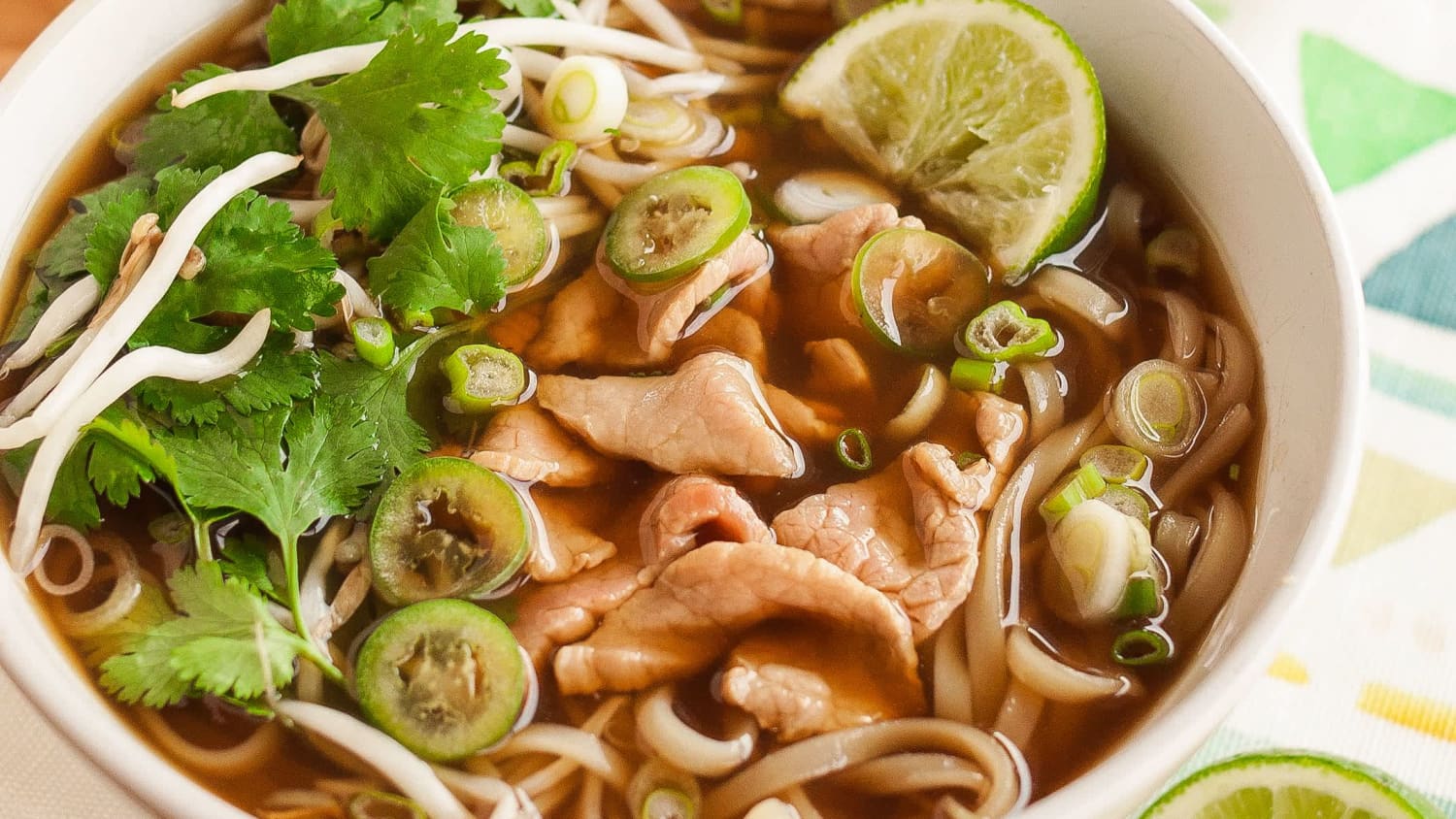How To Make Quick Vietnamese Beef Pho
4.3
(18)
Your folders
Your folders
Servings: 4
Author : Emma Christensen

Ingredients
Export 18 ingredients for grocery delivery
Instructions
Step 1
Prepare the onions and ginger. Peel the onions and cut them into quarters through the root. Peel the ginger and slice it into quarters down its length.
Step 2
Char the onions and ginger. Using tongs, char the onions and ginger on all sides over high flame on a gas stove, or on a baking sheet placed directly under the broiler (about 5 minutes on each side) — until the onions and ginger pieces are charred in spots. Rinse the pieces under cool water to remove any loose, gritty, overly charred bits; set aside.
Step 3
Toast the spices. Place the cinnamon, star anise, cloves, and coriander seeds in a medium saucepan and toast over medium-low heat until toasted and very fragrant, 1 to 2 minutes. Stir frequently to prevent the spices from scorching.
Step 4
Combine the broth ingredients. Add the broth, tamari or soy sauce, fish sauce, carrots, and charred onions and ginger.
Step 5
Cover and simmer the broth. Increase the heat to medium high and bring the broth to a boil. Reduce the heat to medium-low, cover, and simmer 30 minutes to give time for all the spices and aromatics to infuse in the broth. Meanwhile, slice the beef, cook the noodles, and prepare the toppings.
Step 6
Freeze the beef for 15 minutes. Place the beef on a plate, cover with plastic wrap, and freeze for 15 minutes. The edges of the beef should feel firm to the touch, but the beef should not be frozen through. This will make it easier to slice the beef thinly.
Step 7
Slice the beef into thin slices. Remove the beef from the freezer and immediately use your sharpest knife to slice the beef across the grain into very thin slices no thicker than 1/4-inch. Once sliced, keep the beef covered and refrigerated until ready to serve.
Step 8
Cook the rice noodles. Bring a second saucepan of water to a boil. Add the rice noodles and cook according to package instructions (typically 1 minute for very thin noodles and up to 4 minutes for wider noodles). Drain the noodles, then run them under cool water to stop cooking. The noodles will start to stick together after cooking, so either divide them immediately between serving bowls, or toss them with a little neutral-tasting oil to prevent sticking.
Step 9
Prepare the rest of the pho toppings. Thinly slice the scallions and the chili pepper. Cut the lime into wedges. Place the bean sprouts in a serving dish. Roughly chop the herbs or tear them with your hands. Arrange all the toppings on a serving dish and place it on the table.
Step 10
Strain the broth. When the broth is ready, set a strainer over another bowl or saucepan, and strain the solids from the broth. Discard the solids. Place the broth back over low heat and keep it just below a simmer — you should see a fair amount of steam, but the broth should not be boiling. The broth needs to be quite hot to cook the beef.
Step 11
Prepare the pho bowls. If you haven't already done so, divide the noodles between serving bowls and top with a few slices of raw beef. Arrange the beef in a single layer so that the slices will cook evenly in the broth; slices that are stacked or clumped may not cook all the way through.
Step 12
Ladle the hot broth on top. Ladle the steaming broth into each bowl, pouring it evenly over the beef in order to cook it. The beef should immediately start to turn opaque. Fill each bowl with as much broth as desired.
Step 13
Serve the pho with toppings. Serve the pho at the table and let each person top their bowl as they like.